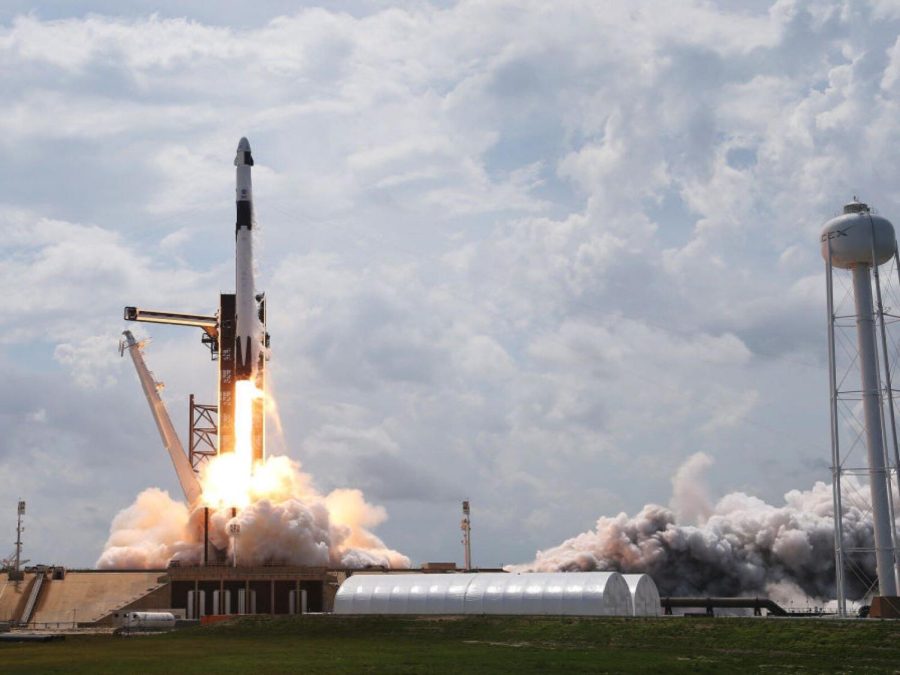SpaceX Launches First Commercial Rocket into Space, Ushering in New Era of Space Travel
The SpaceX Falcon 9 rocket, with the manned Crew Dragon spacecraft attached, takes off from launch pad 39A at the Kennedy Space Center on May 30 in Cape Canaveral, Florida.
June 3, 2020
On Saturday, May 30, a SpaceX rocket lifted off at 3:20 EDT from Kennedy Space Center, sending two astronauts into Earth’s orbit from U.S. soil for the first time in almost a decade and historically marking a new era of space travel.
SpaceX is a privately held company founded in 2002 by Elon Musk, widely known for his role with the automotive company Tesla. Musk is the CEO and Chief Engineer of SpaceX in addition to being the founder. He holds a bachelor’s degree in economics from the Wharton School at the University of Pennsylvania, as well as a bachelor’s in physics from the College of Arts and Sciences there.
The two NASA astronauts aboard the SpaceX Crew Dragon Capsule, Robert Behnken and Doug Hurley, spent 19 hours traveling through space, finally docking and disembarking three hours later at the International Space Station at 1:22 p.m. EDT on Sunday, May 31.
Their mission will not be a complete success until Behnken and Hurley safely return back to Earth. They are expected to remain at the International Space Station for several months, but as of today, no longer than four months, due to the nature of the solar panels on the ship. The panels gradually decay over time, so the concern is that if the ship is docked too long, they would not have the ability to generate enough power for a safe re-entry to Earth’s atmosphere.
Musk was at a loss of words after the Crew Dragon successfully lifted off.
“I’m really quite overcome with emotion on this day,” Musk said. “It’s hard to talk, frankly. It’s been 18 years working towards this goal, so it’s hard to believe that it’s happened.”
SpaceX and Boeing were selected by NASA in 2014 to start transporting people commercially — in addition to cargo — to the Space Station. This program aimed to free up money in NASA’s budget to go to more ambitious projects, like sending astronauts to the moon again, as well as Mars in the future — a personal vision for Musk himself.
Presidents George W. Bush, Barack Obama and Donald Trump all spent time, while in office, to be able to take this step in changing how citizens view space travel. Jim Bridenstine, NASA’s administrator, has high hopes for what this historic launch will do today and for years to come.
“This is a unique opportunity to bring all of America together in one moment in time and say, look at how bright the future is,” he said during a news conference last Tuesday.
However, Mr. Bridenstine made it clear that while the SpaceX mission may unite the country, it is not going to solve social unrest.
“If the expectation was that things on the ground were going to change because we launched a rocket, I think maybe the expectation might have been a little high,” he said.
A new era of space travel has arrived with the historic launch of the SpaceX Crew Dragon on Sunday. In as early as 2021, the private space industry aims to send the first-ever private astronauts to the space station. Several companies already have deals with SpaceX for more commercial missions. Mike Suffredini, a former NASA manager, runs Texas-based startup Axiom Space, which has plans with SpaceX to send four astronauts on commercial missions. Space Adventures, another start-up, has a deal with SpaceX to take tourists into space starting in 2022.











